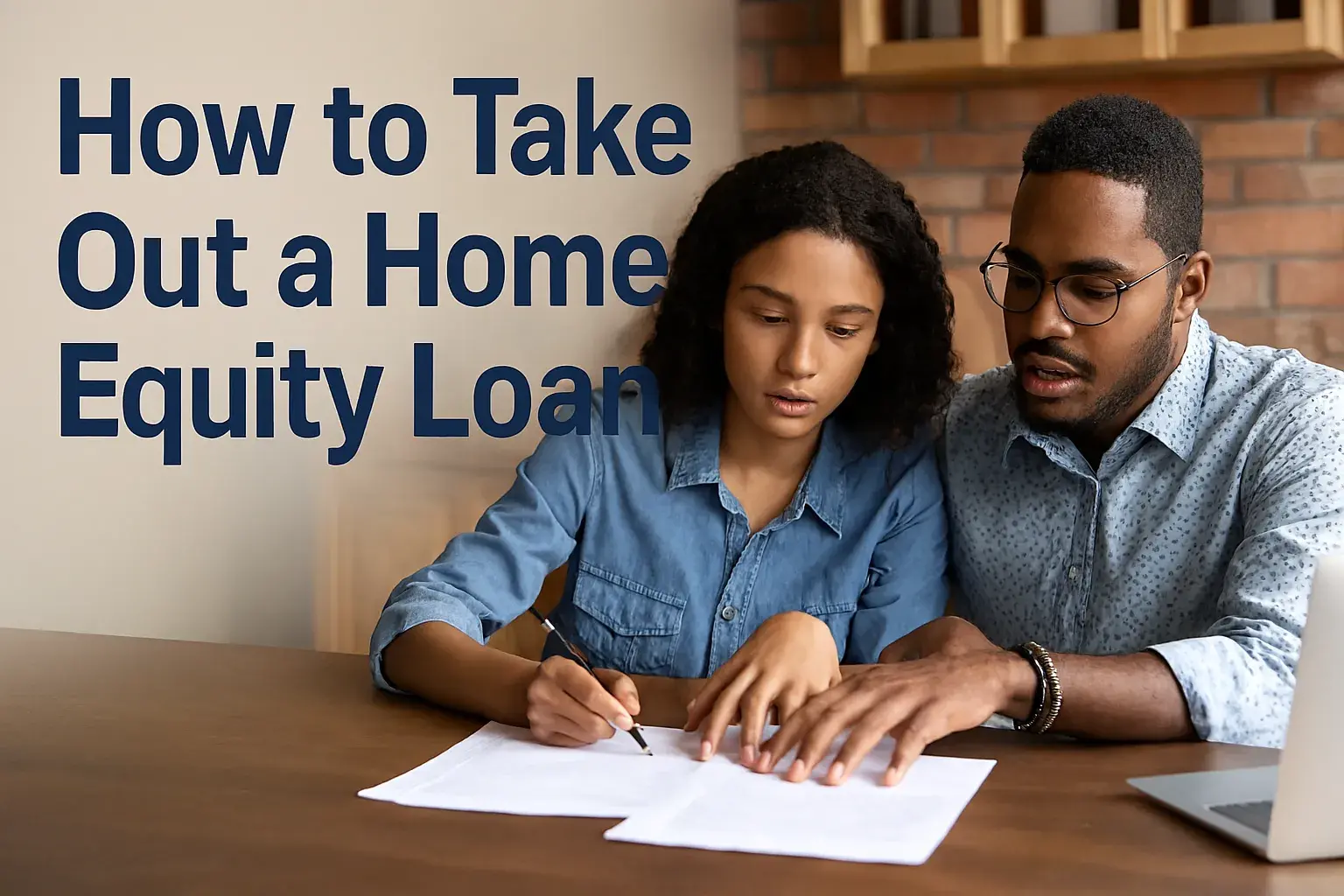-
Posted on: 25 Apr 2025

-
Unlock the power of your business's financial reputation with a Dun and Bradstreet Credit Report. This comprehensive guide dives deep into understanding, obtaining, and leveraging your D&B report to enhance creditworthiness, secure better terms, and drive growth. Discover what's inside and how it impacts your business's future.
Understanding Dun & Bradstreet Credit Reports
In the complex landscape of business finance, understanding your company's creditworthiness is paramount. Dun & Bradstreet (D&B) stands as a global leader in providing this critical insight through its comprehensive business credit reports. These reports are not merely a score; they are a detailed narrative of your company's financial health, payment history, and overall risk profile as perceived by potential lenders, suppliers, and partners. For businesses of all sizes, from burgeoning startups to established enterprises, a D&B credit report is a foundational tool for financial strategy and growth. In 2025, the importance of this data is amplified as economic conditions continue to evolve, making a solid understanding of your D&B standing more crucial than ever.
A Dun & Bradstreet credit report serves as a vital third-party assessment of a business's credit risk. It compiles information from various sources, including public records, trade references, and financial statements, to create a holistic view of a company's financial behavior. This report is instrumental for vendors deciding whether to extend credit, banks evaluating loan applications, and even potential investors assessing the stability of a business. The insights gleaned from a D&B report can significantly influence the terms of credit, interest rates, and the overall ease with which a business can secure the capital and resources it needs to operate and expand.
The accuracy and completeness of a D&B report are therefore of utmost importance. Businesses that proactively manage their D&B profile are better positioned to navigate financial challenges and seize opportunities. This involves not only understanding what information is contained within the report but also knowing how to access it, interpret its contents, and take steps to improve any areas of weakness. As we move further into the digital age, the reliance on such data-driven assessments by the business community will only intensify. This guide aims to demystify the D&B credit report, providing you with the knowledge to effectively utilize it as a strategic asset.
What Information is in a D&B Report?
A Dun & Bradstreet credit report is a multi-faceted document designed to provide a thorough overview of a business's financial standing. It goes beyond simple credit scores to offer a detailed analysis that lenders and suppliers can use to make informed decisions. Understanding each component is key to managing your business's credit profile effectively. The information compiled is vast, covering operational details, financial history, and risk indicators.
Key Components of a D&B Report
While the exact layout and depth can vary slightly depending on the specific D&B product or service, most reports will contain the following essential sections:
1. Company Profile and Basic Information
This section provides fundamental details about your business, including:
- Legal business name and any DBA (Doing Business As) names.
- Primary business address and any branch locations.
- Years in business and operational history.
- Industry classification codes (e.g., SIC, NAICS).
- Ownership structure and key personnel.
- Legal structure (e.g., sole proprietorship, LLC, corporation).
This foundational data helps confirm the identity of the business being assessed and provides context for its operations.
2. Payment History and Trade Experiences
This is arguably the most critical part of the report. It details how your business has managed its payment obligations to suppliers and creditors. Information typically includes:
- Payment patterns with trade creditors (e.g., how often you pay on time, late, or very late).
- Credit extended by suppliers and how it has been utilized.
- Specific payment terms and actual payment dates.
- Public records of liens, judgments, bankruptcies, or suits filed against the business.
Positive payment history is a strong indicator of reliability, while late payments can significantly damage your credit profile.
3. Financial Data
Depending on the data available and the level of reporting, this section may include:
- Key financial ratios (e.g., profitability, liquidity, leverage).
- Sales volume estimates.
- Balance sheet and income statement data (if provided by the business or publicly available).
- Net worth and working capital figures.
This financial snapshot gives a quantitative view of the business's financial health and capacity.
4. D&B Scores and Ratings
D&B assigns various scores and ratings to businesses, offering a quick assessment of credit risk. These include:
- D&B PAYDEX Score: This is a primary indicator of a business's payment performance. It ranges from 1 to 100, with higher scores indicating a history of timely payments. A PAYDEX score of 80 or above is generally considered excellent.
- Financial Stress Score: This score predicts the likelihood of a business experiencing financial distress within the next 12 months. It ranges from 1 to 5, with 1 being the highest risk.
- Credit Score: A composite score reflecting the overall creditworthiness of the business.
- D&B Rating: A broader classification that often combines financial strength and risk assessment, typically presented as a range (e.g., AAA1, A2).
These scores and ratings are synthesized from the detailed data within the report and are heavily scrutinized by decision-makers.
5. Public Records and Legal Filings
This section highlights any negative public information that could impact a business's creditworthiness. This includes:
- Bankruptcies (Chapter 7, 11, 13).
- Liens (tax liens, judgment liens).
- Judgments (court rulings against the business).
- Suits (pending legal actions).
The presence and nature of these filings can dramatically affect a company's credit risk assessment.
6. Operational Data
This may include information on:
- Number of employees.
- Number of locations.
- Lines of business.
- Key executives.
While not directly credit-related, this data provides context for the business's scale and operational complexity.
In 2025, the sophistication of data aggregation means these reports are becoming even more dynamic and comprehensive. Businesses should regularly review their D&B reports to ensure accuracy and identify areas for improvement. Understanding these components is the first step towards proactively managing your business's financial reputation.
How to Obtain Your D&B Credit Report
Accessing your Dun & Bradstreet credit report is a crucial step for any business owner looking to understand and manage their financial reputation. Fortunately, D&B provides several avenues for obtaining this vital document. The process is designed to be accessible, allowing businesses to review their profile and identify areas for improvement. Whether you're a new business owner or have been operating for years, knowing how to get your report is essential.
Methods for Obtaining Your D&B Report
There are primary ways to get your hands on your business's D&B credit report:
1. Registering for a Free D-U-N-S Number
For businesses that do not yet have a DUNS Number, the process of obtaining one can also lead to the creation of a basic D&B profile. While not a full credit report, this is the foundational step for establishing a D&B presence. The DUNS Number is a unique nine-digit identifier for businesses, required by many government agencies and international organizations. The registration process itself often prompts businesses to provide information that D&B will use to build their initial profile. You can register for a free DUNS Number on the Dun & Bradstreet website.
2. Purchasing a D&B Credit Report
The most direct way to get a comprehensive D&B credit report is by purchasing it directly from Dun & Bradstreet. D&B offers various packages and individual report options tailored to different business needs. These purchased reports provide the most detailed and up-to-date information available. The cost can vary depending on the depth of the report and any additional services included. Businesses often purchase reports when:
- Applying for significant loans or credit lines.
- Seeking to establish trade credit with new suppliers.
- Undergoing due diligence for partnerships or investments.
- Proactively monitoring their credit health.
Visiting the Dun & Bradstreet website and navigating to their business solutions or credit report section will allow you to explore available options and make a purchase.
3. Subscribing to D&B Credit Monitoring Services
For businesses that require ongoing monitoring of their credit profile and want to be alerted to any changes, D&B offers subscription services. These services typically include:
- Regular access to your D&B credit report.
- Alerts for significant changes in your credit file, such as new inquiries, public records, or payment updates.
- Tools to help dispute inaccuracies.
- Benchmarking against industry peers.
These subscription plans are ideal for businesses that operate in dynamic markets or frequently interact with creditors and suppliers. They provide peace of mind and enable prompt action if negative information appears.
4. Requesting a Report from a Third Party
When another business or lender requests your D&B report, they will typically obtain it directly from Dun & Bradstreet. In some cases, you may be able to request a copy from the entity that obtained it, though this is less common and may not be the most current version. The standard practice is for the requesting party to acquire the report themselves.
Steps to Take Before Requesting Your Report
Before you order your report, consider the following:
- Ensure your business information is up-to-date: Verify your company name, address, and contact details.
- Gather information on your payment history: Have details ready about your payment experiences with major suppliers.
- Check for existing DUNS Number: A quick search on the D&B website can tell you if you already have one.
By understanding these methods, businesses can effectively obtain and utilize their Dun & Bradstreet credit report to build a stronger financial foundation. In 2025, proactive management of your credit data is not just good practice; it's a competitive advantage.
The DUNS Number and Your Credit Report
The Dun & Bradstreet Data Universal Numbering System (D-U-N-S) Number is more than just an identifier; it's the cornerstone of your business's presence in the Dun & Bradstreet ecosystem and intrinsically linked to your credit report. This unique nine-digit code acts as a global standard for identifying businesses, and its association with your company's financial data is critical for establishing and maintaining a strong credit profile. For any business operating in today's interconnected global economy, understanding the relationship between your DUNS Number and your D&B credit report is essential.
What is a DUNS Number?
A DUNS Number is a unique, nine-digit identification number assigned to businesses by Dun & Bradstreet. It serves to identify unique business entities. The DUNS Number is recognized, recommended, and/or required by over 50 global, national, and international regulatory agencies, and more than 200 million companies worldwide use it. It is particularly crucial for businesses seeking to contract with the U.S. federal government, as it is a prerequisite for many government contracts and grants.
How the DUNS Number Links to Your Credit Report
Your DUNS Number is the primary key that Dun & Bradstreet uses to link all your business information, including your credit history, payment data, and financial performance, into a single, cohesive credit report. When a supplier, lender, or partner requests information about your business, they are often looking for your DUNS Number to access your D&B profile. Here's how the connection works:
- Unique Identification: The DUNS Number ensures that D&B is tracking the correct business entity. Without it, your financial data might be misattributed or lost within the vast D&B database.
- Data Aggregation: All the information D&B collects about your business—payment histories from trade creditors, public records, financial statements, and operational details—is associated with your DUNS Number. This allows D&B to build a comprehensive credit report.
- Access and Retrieval: When a third party seeks your credit information, they will typically use your DUNS Number to retrieve your D&B report. This makes having an accurate and active DUNS Number vital for transparency and accessibility.
- Establishing Creditworthiness: A DUNS Number is often the first step in building a business credit file. Once assigned, D&B begins to compile information, which forms the basis of your credit report and associated scores.
Why Having a DUNS Number is Crucial
Beyond its role in accessing your credit report, a DUNS Number is indispensable for several reasons:
- Government Contracting: As mentioned, it's mandatory for most U.S. federal government contracts and subcontracts.
- Supplier Requirements: Many large corporations and government entities require their suppliers to have a DUNS Number to streamline vendor management and risk assessment.
- International Business: It facilitates business dealings globally, acting as a universal business identifier.
- Building Business Credit: It is the foundation upon which your business credit file is built. Without it, you cannot establish a formal credit history with D&B.
- Financial Institutions: Banks and lenders often use the DUNS Number to access your D&B profile when evaluating loan applications.
How to Obtain and Manage Your DUNS Number
Obtaining a DUNS Number:
The process is straightforward and free:
- Visit the Dun & Bradstreet website.
- Navigate to the section for obtaining a DUNS Number.
- Complete the online application form, providing accurate details about your business.
- D&B will verify your information, which can take a few business days.
Ensuring Accuracy:
Once you have your DUNS Number, it's crucial to ensure that all associated information in your D&B profile is accurate and up-to-date. This includes:
- Correct Business Name and Address: Ensure consistency with your legal registration.
- Accurate Payment Data: Work with your suppliers to ensure they are reporting your payment history correctly to D&B.
- Updating Company Changes: If your business undergoes significant changes (e.g., mergers, acquisitions, ownership changes), update your D&B profile accordingly.
In 2025, the digital interconnectedness of business data means that your DUNS Number is your digital passport in the world of commerce. It directly unlocks access to your D&B credit report, making its acquisition and maintenance a top priority for any business aiming for financial stability and growth.
Interpreting Your D&B Credit Score
Understanding the numbers on your Dun & Bradstreet credit report is as important as knowing the data they represent. D&B employs several scoring models to assess a business's creditworthiness, each providing a unique perspective on risk. For business owners, deciphering these scores is key to understanding their financial standing and identifying actionable steps for improvement. In 2025, with an increasingly data-driven financial world, these scores are more influential than ever.
The D&B PAYDEX Score
The PAYDEX score is D&B's primary indicator of a business's payment performance. It is a dollar-weighted score that ranges from 1 to 100. A higher score signifies a stronger history of paying bills on time.
- 90-100: Excellent. Payments are consistently made within terms.
- 80-89: Good. Generally pays within terms.
- 70-79: Fair. Typically pays late.
- 60-69: Poor. Consistently pays late.
- 0-59: Very Poor. Significant delinquencies, collections, or legal actions.
Interpretation: This score directly reflects how reliable you are as a payer. Suppliers and lenders use this to gauge the risk of extending credit. A high PAYDEX score is crucial for securing favorable payment terms and credit lines.
The D&B Financial Stress Score
This score assesses the likelihood of a business experiencing financial distress within the next 12 months. It ranges from 1 to 5, with 1 being the highest risk of failure and 5 being the lowest risk.
- 1: High risk of financial stress.
- 2: Moderate to high risk.
- 3: Moderate risk.
- 4: Low to moderate risk.
- 5: Very low risk.
Interpretation: This score is vital for lenders and investors assessing the long-term viability of a business. A low score (high risk) can make it difficult to secure loans or attract investment. It's influenced by factors like payment history, financial ratios, and public records.
The D&B Credit Score
This is a more general credit score that provides an overall assessment of a business's creditworthiness. It is often a composite score derived from various factors within the credit report. The exact range and interpretation can vary, but it generally aims to provide a quick snapshot of credit risk.
Interpretation: Lenders and other parties often use this score as an initial filter. A strong D&B Credit Score indicates a lower risk, making it easier to negotiate terms and access capital.
The D&B Rating
The D&B Rating is a classification system that combines financial strength and risk assessment. It typically uses a combination of letters and numbers (e.g., AAA1, A2, B3). The first part of the rating often relates to financial strength, while the second part can indicate the extent of operations or risk.
- Higher ratings (e.g., AAA1, A1): Indicate greater financial strength and lower risk.
- Lower ratings (e.g., C3, D4): Indicate weaker financial strength and higher risk.
Interpretation: This rating provides a broad overview of a company's stability and creditworthiness. It's a quick way for businesses to understand where they stand relative to others in the market.
Factors Influencing Your D&B Scores
Several key factors contribute to your D&B scores:
- Payment History: Timely payments to suppliers and creditors are paramount. Late payments significantly drag down scores.
- Public Records: The presence of liens, judgments, or bankruptcies will severely impact your scores.
- Company Age and Size: Established businesses with a longer operational history and larger size often have an advantage.
- Financial Data: Profitability, liquidity, and leverage ratios play a role, especially in the Financial Stress Score.
- Industry Risk: Some industries are inherently riskier than others, which can influence scores.
- Trade References: Positive payment experiences reported by your suppliers are crucial.
How to Use Your Scores
Once you understand your scores, you can:
- Identify Strengths: Highlight areas where your business excels (e.g., strong PAYDEX score).
- Pinpoint Weaknesses: Recognize areas needing improvement (e.g., late payments, public records).
- Benchmark: Compare your scores against industry averages to understand your competitive position.
- Negotiate: Use your strong scores as leverage when seeking credit or negotiating terms with suppliers.
- Monitor Progress: Track your scores over time to see the impact of your efforts to improve your credit profile.
In 2025, mastering the interpretation of your D&B scores is an indispensable skill for any business leader. It empowers you to make informed decisions, build stronger financial relationships, and secure the resources needed for sustainable growth.
Benefits of a Strong D&B Credit Profile
A robust Dun & Bradstreet credit profile is more than just a collection of data; it's a powerful asset that can unlock significant advantages for your business. In today's competitive marketplace, a strong D&B standing signals reliability, stability, and trustworthiness to potential partners, lenders, and suppliers. Cultivating and maintaining a positive D&B credit profile can lead to tangible benefits that directly impact your bottom line and facilitate growth. In 2025, the digital footprint of your business credit is a critical component of its overall success.
Enhanced Access to Capital and Credit
One of the most significant benefits of a strong D&B profile is improved access to funding. Lenders and financial institutions rely heavily on D&B reports and scores to assess the risk associated with extending credit. A favorable D&B report can lead to:
- Easier Loan Approvals: Banks and other lenders are more likely to approve loan applications from businesses with a proven track record of responsible credit management.
- Better Loan Terms: A strong credit profile can qualify your business for lower interest rates, longer repayment periods, and more favorable loan covenants, saving you substantial amounts of money over time.
- Higher Credit Limits: Suppliers and creditors are more willing to extend larger lines of credit to businesses they trust, allowing for greater purchasing power and operational flexibility.
Improved Supplier Relationships and Terms
Your D&B credit report influences how suppliers view your business. A strong profile can result in:
- More Favorable Payment Terms: Suppliers may offer longer payment terms (e.g., Net 60 or Net 90 instead of Net 30), improving your cash flow and working capital.
- Access to Better Pricing: Businesses with a reputation for reliability may be able to negotiate better prices on goods and services.
- Priority in Supply Chains: In times of scarcity, businesses with strong credit profiles might receive priority from suppliers.
- Reduced Need for Collateral: For certain types of credit, a solid D&B report might reduce or eliminate the need for extensive collateral.
Increased Business Opportunities
A strong D&B credit profile can open doors to new business opportunities:
- Government Contracts: As previously mentioned, a DUNS Number and a good credit standing are often prerequisites for bidding on government contracts, which can represent significant revenue streams.
- Partnerships and Joint Ventures: Potential partners will often review your D&B report as part of their due diligence. A positive report signals stability and reduces their perceived risk in collaborating with your business.
- Investor Confidence: Investors seeking to fund or acquire businesses will scrutinize financial health. A strong D&B profile contributes to a positive impression of financial stability and management competence.
- Expansion into New Markets: When expanding domestically or internationally, a recognized and respected credit profile can facilitate easier entry into new markets and relationships with new partners.
Reduced Risk and Greater Financial Stability
By proactively managing your D&B credit profile, you inherently reduce financial risks:
- Lower Cost of Doing Business: Reduced interest payments on loans and better terms from suppliers directly translate to lower operational costs.
- Protection Against Economic Downturns: Businesses with strong credit are better positioned to weather economic storms, as they have greater access to credit and more favorable terms when cash flow is tight.
- Enhanced Reputation: A consistently positive D&B report builds a reputation for financial responsibility and reliability, which can be invaluable in all aspects of business operations.
Streamlined Vendor and Partner Onboarding
When your business is seeking to work with new vendors or partners, a strong D&B profile can expedite the onboarding process. It provides a readily available, third-party validation of your company's financial standing, reducing the need for extensive, time-consuming verification processes.
Example Scenario
Consider two small manufacturing businesses, 'Alpha Manufacturing' and 'Beta Manufacturing,' both seeking to purchase raw materials from a new supplier. Alpha Manufacturing has a DUNS Number, a PAYDEX score of 95, and no public records. Beta Manufacturing also has a DUNS Number but a PAYDEX score of 65 with a recent tax lien on file. The supplier, wanting to minimize risk, will likely extend credit to Alpha Manufacturing on Net 60 terms with a substantial credit limit. Beta Manufacturing, however, might be offered C.O.D. (Cash on Delivery) terms or a very limited credit line, if any at all.
In 2025, the benefits of a strong D&B credit profile are amplified. It's not just about borrowing money; it's about building trust, creating opportunities, and ensuring the long-term resilience and prosperity of your business. Regularly monitoring and actively improving your D&B standing is an investment that yields significant returns.
Improving Your D&B Credit Report
A Dun & Bradstreet credit report is not static; it's a dynamic reflection of your business's financial behavior. If your current report doesn't meet your expectations, or if you're looking to further strengthen your creditworthiness, there are actionable steps you can take. Improving your D&B credit profile requires a strategic approach focused on consistent positive financial practices and diligent monitoring. In 2025, proactive credit management is a key differentiator for successful businesses.
1. Ensure Your DUNS Number and Company Information are Accurate
The foundation of your D&B report is accurate identification. Verify that your DUNS Number is correctly linked to your business and that all company details (name, address, legal structure) are up-to-date and consistent with your legal registration. Inaccuracies can lead to misattributed data or difficulty in establishing a clear credit history.
2. Pay All Bills On Time, Every Time
This is the single most impactful factor for your D&B PAYDEX score. Establish robust internal processes to ensure all vendor invoices, loan payments, and credit card bills are paid by their due dates. Even a few late payments can significantly damage your score. Consider setting up automated payments for recurring bills.
- Prioritize Payments: Understand which payments are reported to business credit bureaus and prioritize them.
- Communicate with Creditors: If you anticipate a delay, communicate with your creditors *before* the due date to discuss potential arrangements.
- Track Payment Dates: Use accounting software or a calendar to manage all payment due dates effectively.
3. Establish and Grow Trade Credit
Trade credit refers to the credit extended by your suppliers. Actively seek out suppliers who report payment information to Dun & Bradstreet. When you open accounts with them, negotiate reasonable credit terms and then consistently pay within those terms. The more positive trade experiences D&B collects, the stronger your report becomes.
- Ask Suppliers: Inquire if your suppliers report to D&B.
- Start Small: Begin with smaller credit lines and demonstrate consistent on-time payments to build trust.
- Request Credit Limit Increases: As you establish a good payment history, request increases in your credit limits.
4. Monitor Public Records and Address Issues Promptly
Public records like tax liens, judgments, and bankruptcies are detrimental to your credit score. Regularly check public records for any filings against your business. If you find any:
- Resolve the Underlying Issue: Address the debt or legal matter that led to the filing.
- Seek Removal: Once resolved, work with the relevant authorities and D&B to have the record removed or updated to reflect its resolution. This process can take time and may require legal assistance.
5. Review Your D&B Report Regularly
Obtain your D&B report periodically (at least annually, or more frequently if making significant financial applications) to review its contents. Look for:
- Inaccuracies: Ensure all information is correct.
- Negative Entries: Identify any late payments or public records.
- Missing Information: Confirm that positive payment experiences are being reported.
If you find errors, initiate a dispute process with Dun & Bradstreet. The sooner you dispute inaccuracies, the better.
6. Build a Longer Credit History
Time is a factor in credit scoring. The longer your business has a history of responsible credit management, the more it contributes to a stronger profile. Focus on consistent, positive behavior over an extended period.
7. Increase Your Business Size and Financial Strength (Long-Term Strategy)
While not immediate fixes, growth in revenue, profitability, and net worth can positively influence your D&B scores, particularly the Financial Stress Score. This is achieved through sound business operations, strategic planning, and market success.
8. Consider D&B Credit Building Services
Dun & Bradstreet offers services designed to help businesses build and improve their credit profiles. These can include guidance, monitoring, and tools to facilitate the reporting of positive payment data. While these services may have a cost, they can provide structured support for credit improvement.
Disputing Errors on Your D&B Report
If you identify inaccuracies on your D&B report, you have the right to dispute them. The process typically involves:
- Gathering Evidence: Collect documentation that proves the inaccuracy (e.g., payment receipts, court records showing dismissal of a lien).
- Contacting D&B: Initiate a dispute through the Dun & Bradstreet website or by contacting their customer service.
- Submitting Your Dispute: Provide all collected evidence to support your claim.
- Investigation: D&B will investigate the dispute, which may involve contacting the source of the information.
- Correction: If the dispute is found to be valid, D&B will correct your credit report.
Improving your D&B credit report is an ongoing process. By consistently practicing good financial habits and actively managing your credit information, you can build a strong profile that supports your business's growth and stability in 2025 and beyond.
Comparing D&B with Other Business Credit Bureaus
Dun & Bradstreet is a prominent player in the business credit reporting landscape, but it's not the only one. Understanding how D&B compares to other major business credit bureaus can provide a more comprehensive view of your business's credit profile and the various ways it might be assessed. Each bureau has its own data sources, scoring methodologies, and reporting focuses. In 2025, businesses often need to manage their reputation across multiple platforms.
Dun & Bradstreet (D&B)
- Focus: Primarily on larger businesses, corporate entities, and international trade. Strong emphasis on public records, payment history, and financial strength.
- Key Identifier: DUNS Number.
- Primary Scores: PAYDEX Score, Financial Stress Score, D&B Rating.
- Data Sources: Public records, trade references, financial statements, company-provided data, vendor payments.
- Strengths: Global reach, established reputation, comprehensive data for larger corporations, essential for government contracting.
- Considerations: Can be less detailed or accessible for very small, new businesses compared to some other bureaus.
Experian Business
- Focus: Covers a broad spectrum of businesses, from small startups to large enterprises. Strong emphasis on payment history, credit utilization, and public records.
- Key Identifier: EIN (Employer Identification Number) is often used, along with company name and address.
- Primary Scores: Experian Intelliscore Plus, Business Credit Score (various ranges).
- Data Sources: Public records, trade references, bank and lender data, utility payments, business registration data.
- Strengths: Wide coverage of small and medium-sized businesses (SMBs), robust data on payment behavior, accessible reports for smaller entities.
- Considerations: May not have the same depth of international corporate data as D&B.
Equifax Business
- Focus: Similar to Experian, Equifax Business serves a wide range of businesses, with a focus on payment history, credit utilization, and overall risk assessment.
- Key Identifier: EIN is crucial.
- Primary Scores: Business Credit Risk Score, Business Payment Index (BPI).
- Data Sources: Public records, trade references, financial institutions, credit card issuers, utility companies.
- Strengths: Comprehensive data on SMBs, strong insights into payment patterns, widely used by lenders.
- Considerations: Like Experian, its international corporate focus might be less extensive than D&B's.
Credit Safe
- Focus: A global player, Credit Safe emphasizes providing real-time credit information, company monitoring, and risk management solutions. They offer detailed company profiles and financial insights.
- Key Identifier: Company registration number.
- Primary Scores: Various proprietary credit scores and risk indicators.
- Data Sources: Extensive public records, financial data, legal filings, and proprietary data collection.
- Strengths: Real-time data, extensive global coverage, user-friendly platform for monitoring, strong on legal and financial health indicators.
- Considerations: Newer to some markets compared to D&B, Experian, or Equifax.
LexisNexis Risk Solutions
- Focus: While not a traditional credit bureau in the same vein, LexisNexis provides comprehensive data solutions that include risk assessment, identity verification, and fraud detection, often incorporating credit-related data.
- Key Identifier: Varies based on the solution.
- Primary Scores: Proprietary risk scores and analytics.
- Data Sources: Vast public records, proprietary databases, identity data, financial transactions.
- Strengths: Deep data analytics, fraud detection capabilities, comprehensive risk profiles beyond just credit.
- Considerations: Often used by larger enterprises and financial institutions for complex risk management, not typically for individual business credit reports in the same way as D&B.
Comparison Table
Here's a simplified comparison:
Feature Dun & Bradstreet (D&B) Experian Business Equifax Business Credit Safe Primary Focus Larger businesses, international trade, corporate Broad spectrum, SMBs, payment behavior Broad spectrum, SMBs, payment behavior Global real-time data, risk monitoring Key Identifier DUNS Number EIN EIN Company Registration No. Key Scores PAYDEX, Financial Stress, D&B Rating Intelliscore Plus, Business Credit Score Credit Risk Score, BPI Proprietary Risk Scores Strength for SMBs Moderate to High (requires DUNS) High High High Strength for Large Corps/Int'l Very High Moderate Moderate High Government Contracting Essential (DUNS) Less direct Less direct Less direct Key Takeaways for Businesses
- Diversify Your Data: Be aware that different entities might pull reports from various bureaus.
- Prioritize D&B for Specific Needs: If you're involved in government contracting or international trade, a strong D&B profile is non-negotiable.
- Manage SMB Credit: For smaller businesses, paying attention to Experian and Equifax is equally important for securing local and national credit.
- Monitor All Relevant Reports: If possible, periodically check reports from multiple bureaus to ensure consistency and identify any discrepancies.
- Consistency is Key: Regardless of the bureau, the core principles of timely payments, responsible credit use, and accurate information remain universal for building a strong credit profile.
In 2025, a holistic approach to business credit involves understanding your standing not just with Dun & Bradstreet, but across the entire spectrum of credit reporting agencies. This ensures you are well-positioned for any financial opportunity that comes your way.
Real-World Scenarios and Case Studies
Understanding the theoretical aspects of a Dun & Bradstreet credit report is one thing, but seeing how it plays out in real business situations is far more impactful. These scenarios illustrate the practical implications of having a strong or weak D&B profile, highlighting how it can shape opportunities and challenges. In 2025, these real-world examples underscore the enduring importance of diligent credit management.
Scenario 1: The Startup Seeking Initial Inventory Credit
Company: 'Fresh Bites Catering,' a new catering business. Goal: Secure a $5,000 line of credit from a food supplier to purchase ingredients for upcoming events. D&B Profile:
- Fresh Bites Catering: No established D&B profile, no DUNS Number yet, no payment history.
- Obtain a DUNS Number.
- Open a business bank account and pay for initial supplies with cash or debit.
- Seek out suppliers who report to D&B and negotiate for a small trade line, paying meticulously on time.
- Gradually build positive payment history to establish a D&B PAYDEX score.
Scenario 2: The Growing Manufacturer Securing Expansion Capital
Company: 'Precision Parts Inc.,' a mid-sized manufacturing firm looking to purchase new machinery. Goal: Obtain a $250,000 business loan from a bank. D&B Profile:
- Precision Parts Inc.: Established D&B profile, DUNS Number active for 10 years.
- PAYDEX Score: 92 (Excellent).
- Financial Stress Score: 4 (Low risk).
- Public Records: None.
- Trade References: Consistently positive payment history reported by major suppliers.
Scenario 3: The Retailer Negotiating with a New Vendor
Company: 'Style Haven Boutique,' a clothing retailer. Goal: Negotiate terms with a new, high-end apparel supplier offering Net 60 terms. D&B Profile:
- Style Haven Boutique: DUNS Number active, PAYDEX Score 85 (Good), good payment history with existing vendors.
Case Study: 'Tech Solutions Corp.' - Turnaround Story
Challenge: Tech Solutions Corp. was a growing software company that had experienced rapid expansion. However, their internal accounting processes lagged behind, leading to several late payments to key software and hardware vendors. This resulted in a declining D&B PAYDEX score (from 88 down to 65) and a higher Financial Stress Score.
Impact: Their primary cloud service provider threatened to move them to C.O.D. terms, and a potential strategic investor expressed concern over their financial stability based on their D&B report.
Action Plan:
- Immediate Audit: They conducted an internal audit to identify all outstanding payments and implement a new, automated payment system.
- Vendor Communication: They proactively contacted vendors, explaining the situation and committing to immediate payment of overdue amounts.
- D&B Dispute: They reviewed their D&B report, ensured all payments were correctly reflected as paid (even if late initially), and disputed any lingering inaccuracies.
- Focus on Timeliness: For the next 12 months, every single payment was made on or before the due date. They specifically worked with vendors who reported to D&B.
Result: Within 18 months, Tech Solutions Corp.'s PAYDEX score rebounded to 90, and their Financial Stress Score improved. The cloud provider reinstated their standard billing terms, and the strategic investor proceeded with their investment, citing the company's demonstrated ability to rectify financial issues.
Case Study: 'Global Exports Ltd.' - Leveraging D&B for International Growth
Opportunity: Global Exports Ltd., an established exporter of artisanal goods, identified a lucrative market in Europe. To secure partnerships with European distributors, they needed to demonstrate their financial reliability on an international scale.
Action: They ensured their DUNS Number was up-to-date and that their D&B profile accurately reflected their robust financial performance and consistent payment history over 15 years.
Result: When European distributors checked Global Exports Ltd.'s D&B profile, they found a strong, reliable business with a global identifier. This facilitated trust and allowed Global Exports Ltd. to secure distribution agreements more easily, leading to significant international sales growth.
These scenarios and case studies highlight that your Dun & Bradstreet credit report is a living document that directly influences your business's opportunities. In 2025, actively managing this profile is not just good practice; it's a strategic imperative for growth and stability.
Future Trends in Business Credit Reporting
The world of business credit reporting, including the services provided by Dun & Bradstreet, is constantly evolving. Driven by technological advancements, changing economic landscapes, and increasing demands for data, several key trends are shaping the future. Understanding these trends is crucial for businesses to stay ahead and leverage their credit profiles effectively. In 2025, these shifts are already becoming more pronounced.
1. Increased Use of Alternative Data Sources
Beyond traditional trade payments and public records, credit bureaus are increasingly incorporating alternative data to provide a more holistic view of a business's creditworthiness. This can include:
- Cash Flow Data: Analyzing real-time bank account activity and cash flow patterns to assess a business's ability to meet obligations.
- E-commerce and Transaction Data: For online businesses, sales volume, customer reviews, and transaction histories can offer insights into financial stability.
- Supply Chain Data: Information about a company's position and performance within its supply chain.
- Digital Footprint: Analyzing online presence, social media activity, and website traffic as indirect indicators of business health.
Impact: This trend aims to provide more accurate assessments, especially for newer businesses or those with limited traditional credit history, making credit more accessible.
2. Advanced Analytics and AI-Powered Scoring
Artificial intelligence (AI) and machine learning (ML) are revolutionizing how credit scores are calculated. These technologies can process vast amounts of data more efficiently and identify complex patterns that traditional methods might miss.
- Predictive Modeling: AI can build more sophisticated models to predict the likelihood of default or financial distress with greater accuracy.
- Real-time Risk Assessment: AI enables continuous monitoring and dynamic scoring, allowing for quicker adjustments to credit assessments.
- Personalized Credit Products: AI can help tailor credit offers and terms based on a more granular understanding of individual business risk profiles.
Impact: Expect more dynamic, personalized, and potentially more predictive credit scoring models in the coming years.
3. Emphasis on Real-time Data and Monitoring
The demand for up-to-the-minute information is growing. Businesses and lenders want to understand a company's current financial health, not just historical data.
- Continuous Monitoring: Credit bureaus are enhancing their capabilities to provide real-time alerts on significant changes in a business's credit profile (e.g., new liens, payment delinquencies).
- Instantaneous Reporting: The ability to access and update credit information almost instantly will become more common.
Impact: This allows for faster decision-making, proactive risk management, and more agile business operations.
4. Increased Focus on ESG (Environmental, Social, and Governance) Factors
While not directly a credit score component in the traditional sense, ESG factors are increasingly influencing investment and lending decisions. Businesses with strong ESG credentials may find it easier to secure capital, as investors and lenders view them as less risky and more sustainable in the long term.
- Risk Mitigation: Poor ESG practices can indicate operational or reputational risks that could impact financial stability.
- Investor Demand: Growing investor interest in sustainable and ethical businesses means companies with strong ESG performance may have an advantage.
Impact: Businesses will need to consider their ESG performance as part of their overall reputation and financial strategy.
5. Enhanced Data Security and Privacy
As more data is collected and analyzed, the importance of data security and privacy becomes paramount. Credit bureaus will continue to invest in robust security measures to protect sensitive business information.
- Compliance: Adherence to evolving data privacy regulations (like GDPR, CCPA) will be critical.
- Transparency: Businesses will expect greater transparency regarding how their data is collected, used, and protected.
Impact: Trust and security will be key differentiators for credit reporting agencies.
6. Globalization and Standardization
With businesses operating across borders more than ever, there's a continued push for greater standardization in business credit reporting globally. While complete standardization is a long way off, efforts to align methodologies and data requirements will likely continue.
- Universal Identifiers: The role of identifiers like the DUNS Number may become even more critical.
- Cross-Border Data Sharing: Improved frameworks for sharing credit information across different jurisdictions.
Impact: Facilitates international trade and investment by providing more consistent risk assessments across different markets.
Preparing for the Future
To navigate these future trends, businesses should:
- Embrace Digital Transformation: Ensure your internal systems can capture and manage financial data effectively, including alternative data points.
- Prioritize Data Accuracy: The quality of your data is paramount, especially with advanced analytics.
- Monitor Your Digital Reputation: Be mindful of your online presence and any data that could be used in credit assessments.
- Stay Informed: Keep abreast of changes in credit reporting practices and regulations.
- Focus on Holistic Business Health: Consider factors beyond just payment history, including operational efficiency and sustainability.
In 2025 and beyond, the landscape of business credit reporting will continue to be dynamic. By understanding and adapting to these emerging trends, businesses can better position themselves for financial success and resilience.
Conclusion
Your Dun & Bradstreet Credit Report is a critical document that significantly influences your business's financial trajectory. It serves as a comprehensive assessment of your company's creditworthiness, impacting your ability to secure loans, negotiate favorable terms with suppliers, and forge new partnerships. Understanding its contents, from payment history and financial data to D&B scores and public records, is the first step toward proactive financial management. By obtaining your report, meticulously interpreting its scores, and actively working to improve any areas of weakness, you can unlock a wealth of benefits, including enhanced access to capital, better supplier relationships, and increased business opportunities.
The journey to a strong D&B credit profile involves consistent, timely payments, diligent monitoring of public records, and strategic engagement with trade creditors. While D&B is a leading authority, it's also wise to be aware of other business credit bureaus and manage your reputation across multiple platforms. As we look towards the future, trends like the integration of alternative data, AI-driven scoring, and real-time monitoring will further refine how businesses are assessed. By embracing these changes and maintaining a commitment to financial integrity, your business can build a resilient and powerful credit profile. In 2025, leveraging your Dun & Bradstreet Credit Report effectively is not just about accessing credit; it's about building a











